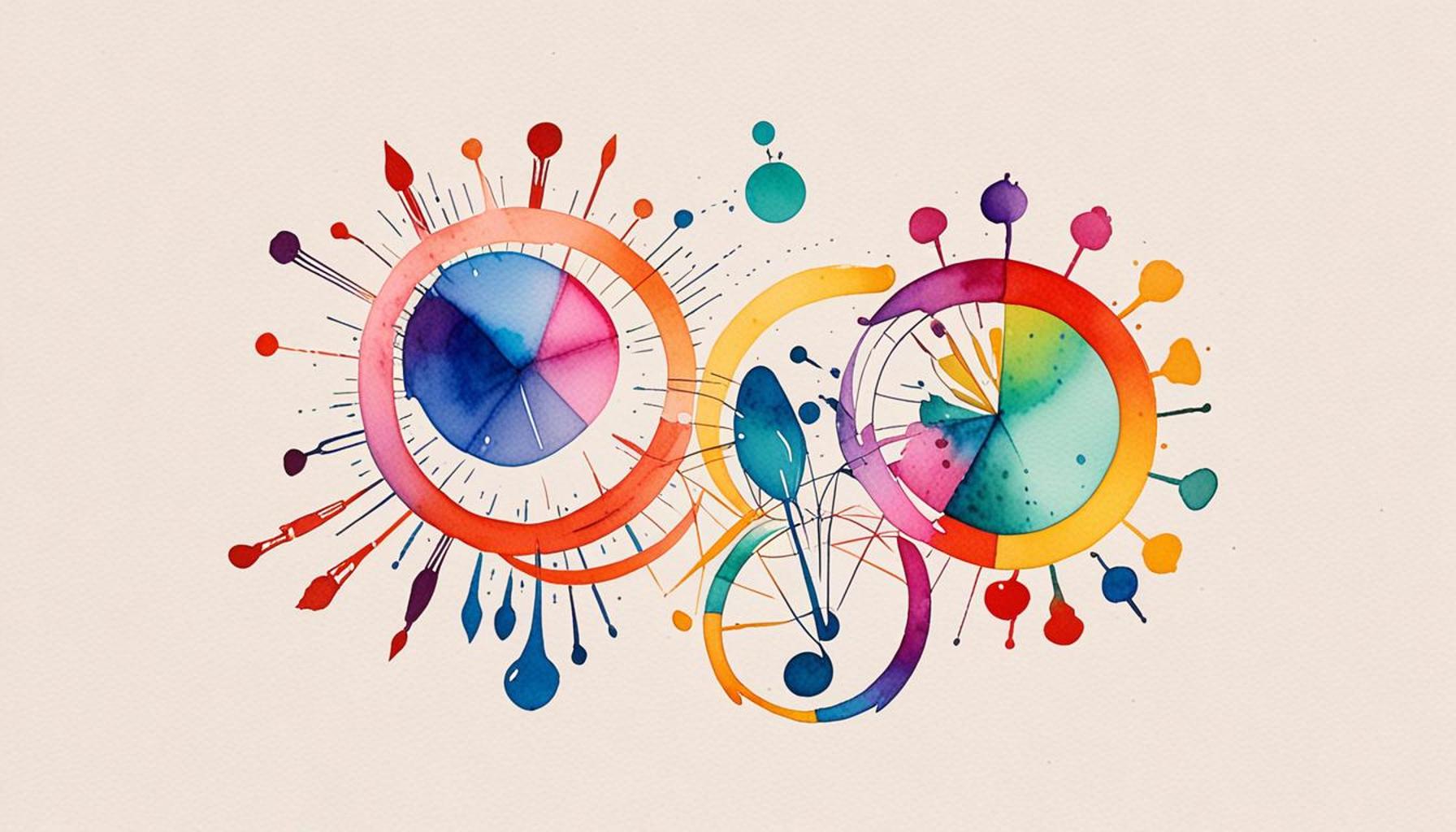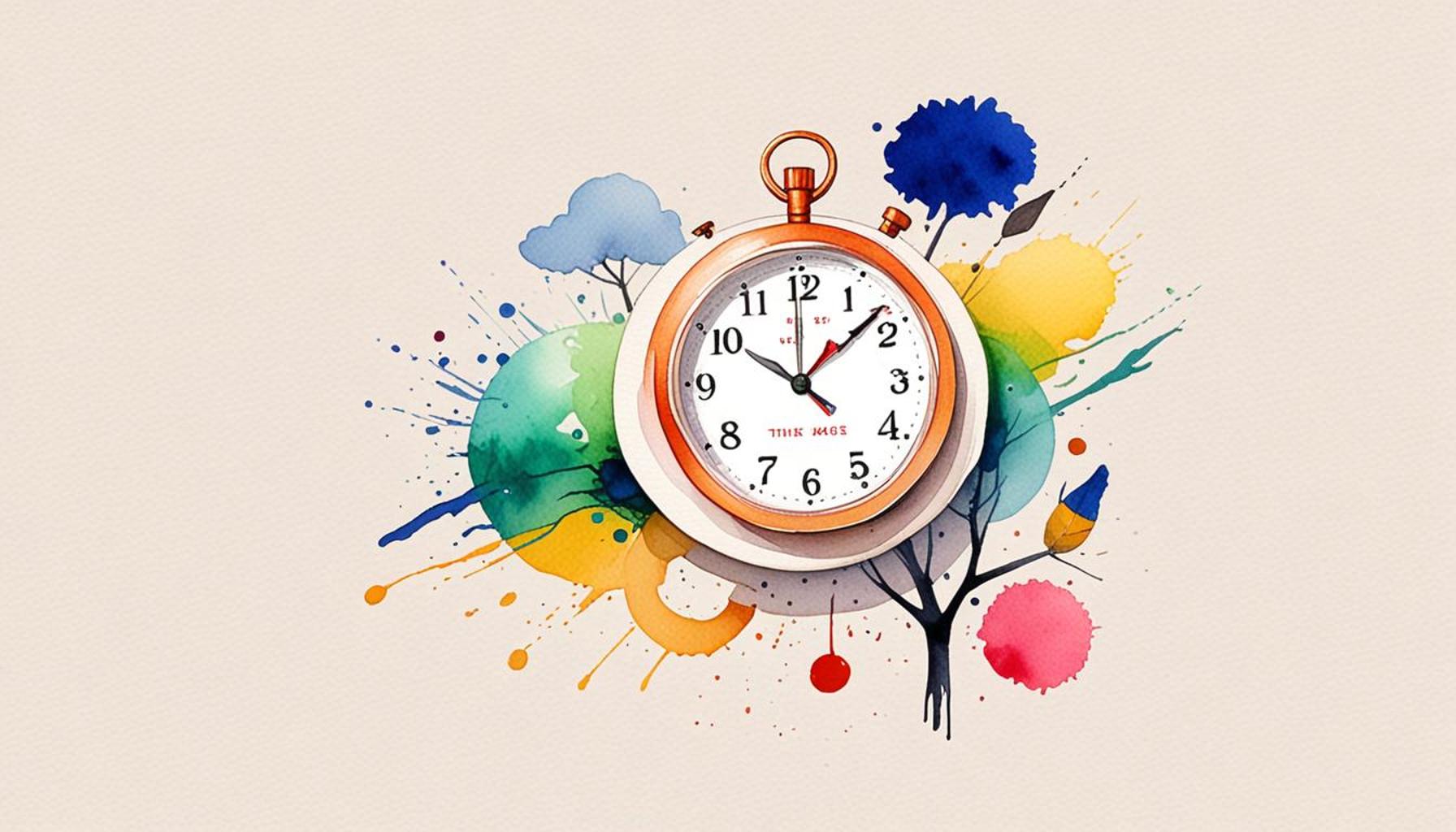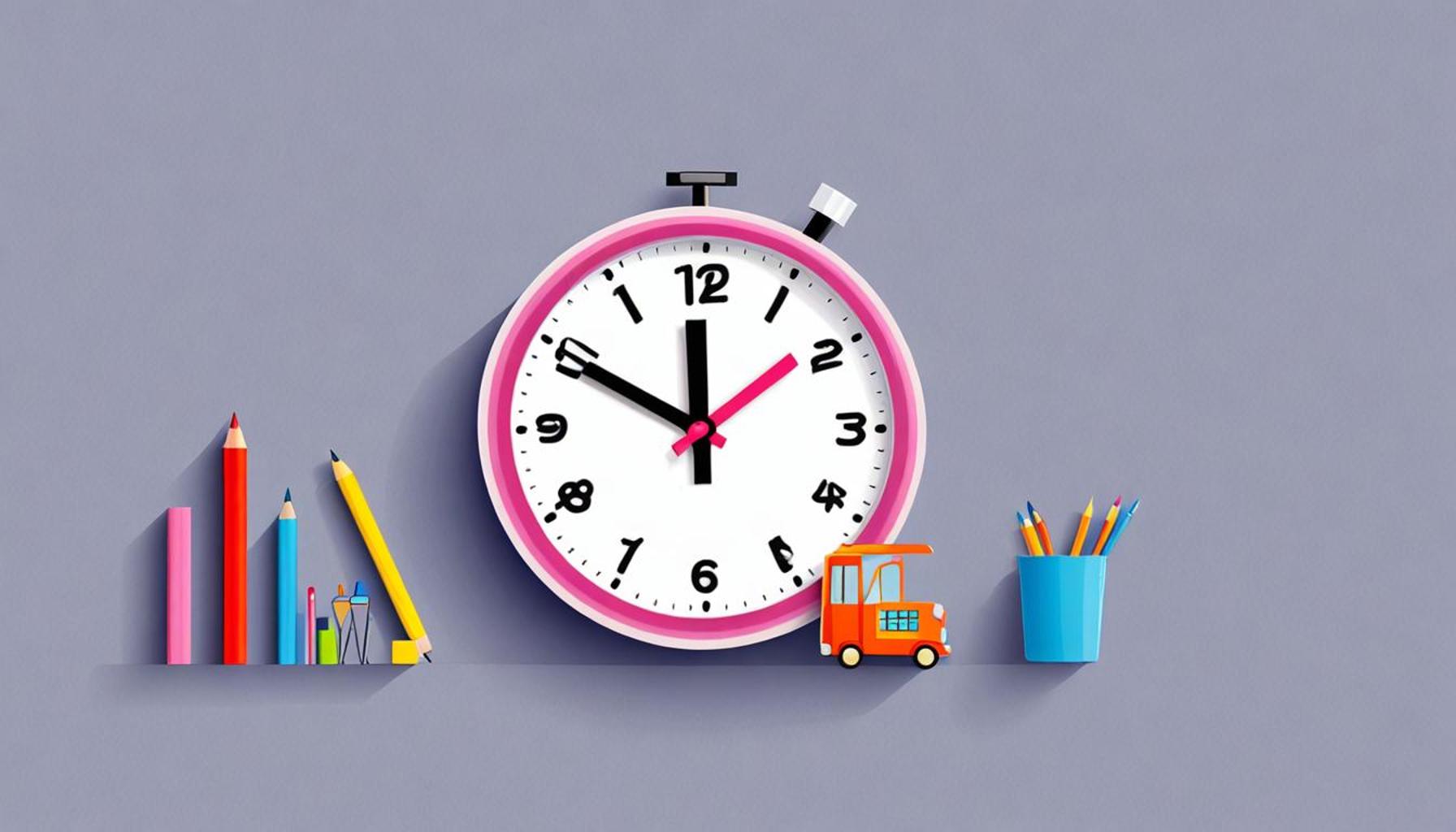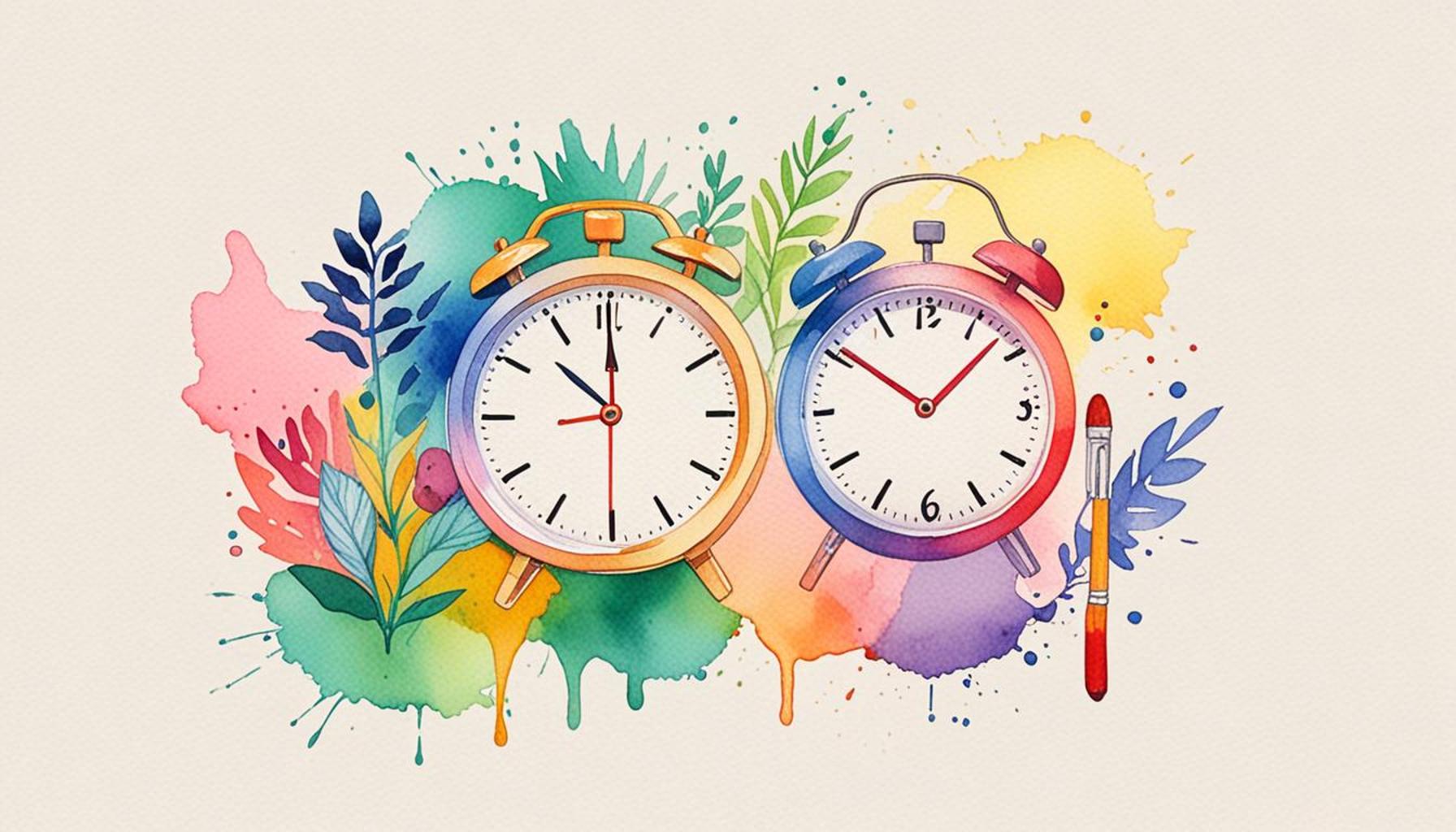Work Rhythms: The Synergy between Minimalism and Productivity Cycles

The Interplay of Minimalism and Productivity: A Path to Success
In an era where distractions abound, the quest for efficiency has never been more relevant. Understanding the connection between minimalism and productivity cycles can unlock new levels of success in both personal and professional realms.
Minimalism promotes simplicity, enabling focus on what truly matters. By stripping away the non-essential, individuals can create not only a tangible but also a psychological space that fosters creativity and clarity. Consider these principles:
- Clarity: Uncluttered spaces lead to uncluttered minds. When your physical environment is free from chaos, it significantly reduces cognitive load, allowing you to think clearly and make better decisions. For instance, a clean desk not only looks appealing but can spark motivation, while a cluttered workspace can be overwhelming and lead to indecision.
- Focus: Prioritizing essential tasks enhances performance. By utilizing methods like the Eisenhower Matrix, individuals can categorize tasks based on urgency and importance, ensuring that they concentrate their efforts on activities that align with their long-term objectives.
- Energy Conservation: Streamlined workflows prevent burnout. Embracing minimalism means streamlining processes and tasks, thereby conserving mental and physical energy for high-impact areas of work. This approach can be particularly beneficial in high-pressure jobs, such as in tech or finance, where the risk of burnout is significant.
Understanding Productivity Cycles
On the other hand, productivity cycles emphasize the ebb and flow of energy throughout the day. Recognizing these patterns can drastically improve how we approach our work. Key aspects include:
- Peak Performance: Identify when you are most alert and productive. Many studies suggest that for most people, energy levels fluctuate at specific times, with peaks occurring either in the morning or during the afternoon. Understanding your personal rhythm can guide you in scheduling demanding tasks for when you are at your best.
- Breaks: Schedule short intervals to recharge. Techniques like the Pomodoro Technique advocate for focused work sessions followed by brief breaks to maintain high levels of productivity over longer periods. This method not only helps sustain attention but also injects moments for rest into your routine.
- Adjustments: Adapt your tasks to align with your natural rhythms. Recognizing that some tasks may require more energy or focus than others, it is beneficial to adapt your daily schedule to balance strenuous activities with easier, more routine ones.
Creating a Synergy for Enhanced Performance
By merging the principles of minimalism with an understanding of productivity cycles, individuals can create a powerful framework for enhanced performance. For example, an employee who clears their workspace before engaging in high-focus tasks is likely to experience increased productivity and satisfaction. The synergy between minimalism and productivity cycles is not just theoretical; it offers practical strategies that can transform daily routines.
Furthermore, many successful entrepreneurs and leaders endorse these principles. Tim Ferriss, author of “The 4-Hour Workweek,” epitomizes this blend of minimalism and efficiency, demonstrating how systematic delegation and task elimination can lead to remarkable results.

As we delve deeper, we will explore techniques that harmonize these principles, helping you to foster a work environment that champions efficiency and effectiveness. Embracing both minimalism and mindful productivity cycles may well be the key to leveraging your potential in a world filled with distractions.
DISCOVER MORE: Click here to delve deeper
Finding Your Flow: Integrating Minimalism into Productivity Cycles
The harmony between minimalism and productivity cycles can lead to enhanced effectiveness and personal satisfaction in the workplace. By understanding and implementing these principles, you can navigate through the complexities of modern tasks with newfound clarity and focus. An essential starting point is grasping how the concepts intertwine to create optimized work rhythms.
One of the most pivotal elements in establishing this synergy is the idea of environmental control. A minimalistic approach encourages the reduction of physical and mental clutter. This can involve decluttering your workspace and digital tools simultaneously. For example, consider the plethora of applications available today; while they can enhance productivity, overlapping functionalities may create chaos rather than order. Selecting a few key tools that align with your goals allows you to maintain an organized approach, thus honoring your productivity cycles.
Furthermore, implementing a conscious routine that aligns with your natural energy fluctuations is essential. Research illustrates that individuals often experience a biorhythm that influences their productivity levels throughout the day. For example, the typical American workday runs from 9 AM to 5 PM, but studies suggest that people have a pronounced peak in focus typically mid-morning or in the early afternoon. By acknowledging your personal productivity spikes—perhaps through journaling your energy levels or using productivity tracking apps—you can craft a work schedule that maximizes efficiency. Here are key strategies to consider:
- Time Blocking: Allocate specific time slots for different tasks based on your energy rhythms. By segmenting your day into blocks dedicated to focused work, breaks, and light tasks, you can better match your energy levels.
- The Right Environment: Create a workspace that promotes concentration. Whether it’s a simple desk setup in your home or a quiet corner in your office, ensure it reflects minimalism—free from distracting visuals and unnecessary gadgets. This creates a conducive atmosphere for productivity.
- Visual Reminders: Use tools like sticky notes or digital apps to remind yourself of your top priorities. A minimal approach here is key: only display tasks that align with your most immediate goals, thus keeping your focus on what truly matters.
As you adapt these minimalistic principles into your day-to-day productivity cycles, you may start to notice a shift not only in your efficiency but also in your overall well-being. An intelligently structured work rhythm fosters not just output but also creativity and innovation. It’s an invitation to shift from merely being busy to being truly productive.
In the next section, we will explore specific techniques to enhance this integration, further illustrating how minimalism can enrich productivity cycles and lead to profound improvements in work performance.
| Advantages | Details |
|---|---|
| Enhanced Focus | By adopting minimalism, distractions are reduced, leading to improved concentration. |
| Increased Productivity | Understanding productivity cycles helps individuals align their tasks with their natural energy levels. |
| Stress Reduction | Minimalism reduces mental clutter, contributing to lower stress levels and clearer thinking. |
| Sustainable Workflow | Aligning work patterns with productivity rhythms fosters a more sustainable approach to workload management. |
Incorporating the principles of minimalism into your work life not only creates a serene environment but also lays the ground for understanding and leveraging productivity cycles. For instance, enhanced focus is a direct outcome of decluttering both your workspace and your tasks. This leads to a sharpened concentration that helps individuals zero in on what truly matters, avoiding multitasking and its common pitfalls.Furthermore, by recognizing increased productivity that comes with working in tune with your energy levels—knowing when you work best can transform your daily outputs. This proactive approach, paired with stress reduction garnered from a minimalist mindset, enables you to maintain mental clarity and emotional well-being.Lastly, establishing a sustainable workflow by aligning your tasks with your individual productivity rhythms emphasizes the importance of rest and recharge, crucial for long-term success. This synergy reveals how a minimalist philosophy can profoundly impact habits and results, encouraging exploration into its broader implications on personal and professional effectiveness.
DISCOVER MORE: Click here to learn how to declutter your space
Techniques to Enhance Minimalism in Your Work Cycles
As you delve deeper into the integration of minimalism with your productivity cycles, exploring effective techniques can elevate your routine to the next level. The beauty of minimalism lies in its adaptability; incorporating the right strategies can make a world of difference, leading to a more streamlined workflow and enriched creative output.
One powerful method is the practice of the Pomodoro Technique. This time management approach encourages working in focused bursts, typically 25 minutes, followed by a five-minute break. After completing four cycles, you take a longer break of 15 to 30 minutes. This fits well within the minimalistic framework, as it promotes deep focus while minimizing distractions. By breaking your day into manageable segments, you allow yourself the freedom to rest and rejuvenate, aligning well with the natural ebbs and flows of energy throughout the workday.
Another crucial aspect of merging minimalism with your productivity cycles involves embracing digital decluttering. In our technology-driven world, excessive digital noise can derail even the most disciplined workers. Start by cleaning out your inbox—aim for “inbox zero” and implement a rigorous email management system that prioritizes essential communications. Furthermore, consider minimizing notifications from apps and tools that do not serve your core objectives. A streamlined digital landscape complements your physical workspace, enhancing your ability to focus on high-priority tasks while conserving cognitive resources.
Yet another pivotal technique is the concept of single-tasking over multitasking. Research shows that multitasking can diminish productivity by 40%. It can be counterproductive in environments overflowing with tasks demanding attention. Instead, practice single-tasking to devote yourself wholeheartedly to one task at a time. This less cluttered approach enhances your focus, leading to higher-quality outcomes. Techniques such as the “two-minute rule”—where you tackle any task that can be completed in two minutes immediately—can also help reduce the buildup of minor tasks, keeping your to-do list minimal.
Moreover, implementing a weekly review can provide invaluable insight into your work rhythms. Dedicate time each week to assess your productivity, evaluate what strategies worked, and identify areas for enhancement. This reflective practice allows you to adapt your work cycles in alignment with your evolving goals, simultaneously embracing the minimalism ethos of continual improvement. During these reviews, reflect on your success and consider setting SMART goals (Specific, Measurable, Achievable, Relevant, Time-bound) for future tasks, sharpening your focus and minimizing distractions.
Consider also the role of mindfulness in cultivating a minimalistic mindset through your productivity cycles. Mindfulness practices, such as meditation or mindful breathing exercises, can help center your thoughts and create mental space. These practices enable you to approach tasks with greater clarity and intent, minimizing anxiety around responsibilities and enhancing overall productivity.
In essence, learning how to blend minimalism with strategic productivity techniques not only refines your workflow but can also cultivate a more fulfilling and balanced work life. Each effort devoted to creating a minimalistic approach magnifies your output, allowing your productivity cycles to thrive efficiently.
DISCOVER MORE: Click here for essential tips on digital decluttering
Conclusion
In the fast-paced world of work, the synergy between minimalism and productivity cycles presents an unparalleled opportunity to enhance both efficiency and satisfaction. By prioritizing clarity and focus through minimalistic techniques, individuals can navigate their tasks with intention and purpose. As we’ve explored, effective methods such as the Pomodoro Technique, digital decluttering, and single-tasking empower professionals to reclaim control over their workflows, ultimately leading to improved output.
The process of continuous reflection, through practices like a weekly review and the establishment of SMART goals, enables workers to adapt their strategies to their evolving needs, fostering a sense of accomplishment and progression. Moreover, incorporating mindfulness enhances the effectiveness of these approaches, helping individuals ground themselves in the present, thereby reducing overwhelm.
As businesses and organizations in the United States continue to evolve, embracing these principles of minimalism can bring not only clarity to individual work rhythms but can also create a culture of productivity that becomes infectious. In a society that often glorifies busyness, it’s a compelling thought: simplifying and streamlining our approaches may be the key to unlocking new levels of creativity, satisfaction, and overall well-being. By delving deeper into the powerful interplay between minimalism and productivity, professionals are not just optimizing their workflows; they are also cultivating a lifestyle that thrives on efficiency and purpose.
In conclusion, as you embark on this journey of integrating minimalism with your productivity rhythms, remember that every small change counts. With this newfound perspective, you are invited to explore further and discover personal techniques that resonate with you, ultimately paving the way toward a more fulfilling work life.


